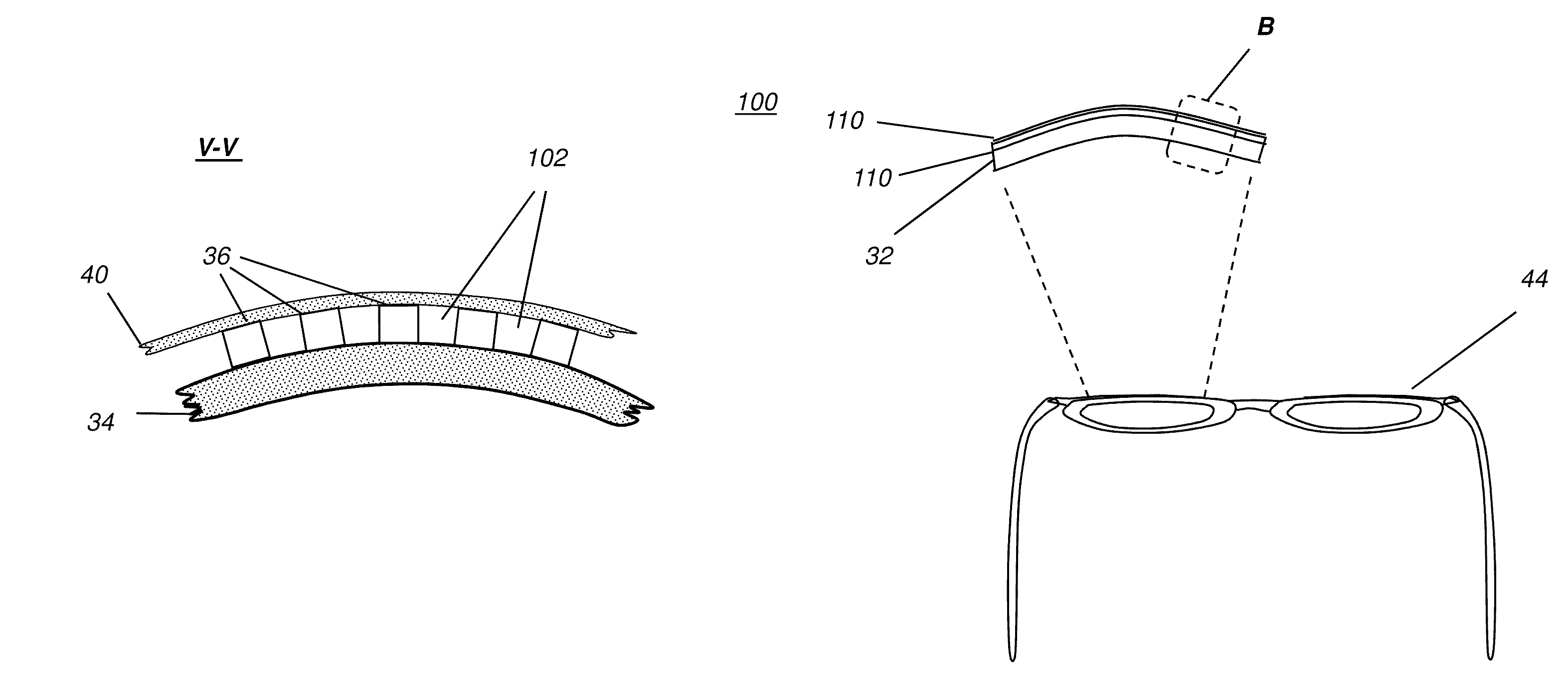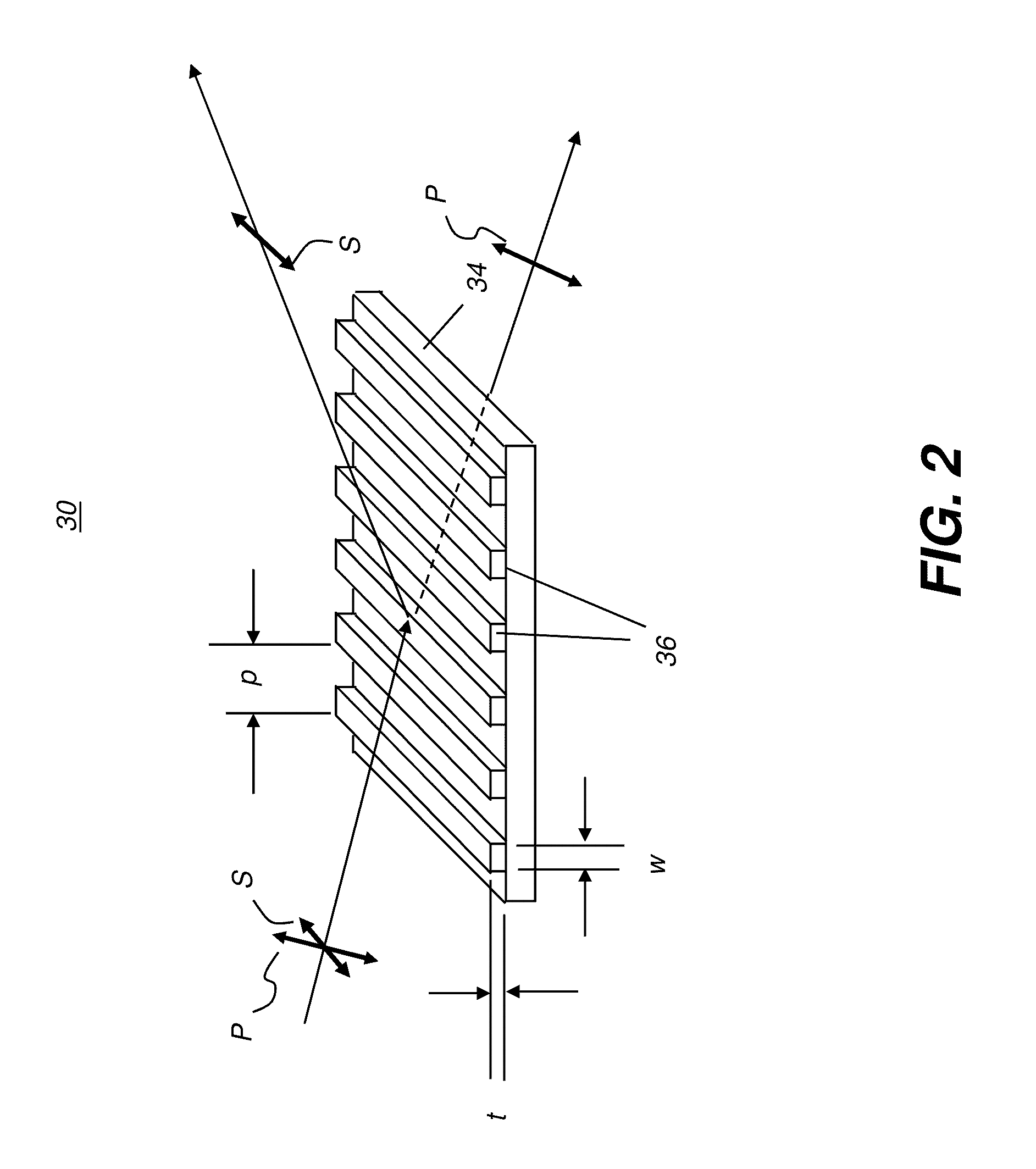Polarized eyewear
a polarized eyewear and polarization technology, applied in the field of polarized sunglasses, can solve the problems of inability to maintain the best polarization axis for viewing through polarized eyewear, difficult to compensate, and inevitable amount of viewer head movement, so as to reduce back reflection
- Summary
- Abstract
- Description
- Claims
- Application Information
AI Technical Summary
Benefits of technology
Problems solved by technology
Method used
Image
Examples
Embodiment Construction
[0051]Elements not specifically shown or described may take various forms well known to those skilled in the art. Figures shown and described herein are provided in order to illustrate key principles of operation and component relationships along their respective optical paths or fabrication techniques according to the present invention and are not drawn with intent to show actual size or scale. Some exaggeration may be necessary in order to emphasize basic structural relationships or principles of operation.
[0052]In the context of the present disclosure, the term “complex index of refraction” applies where the index of refraction for a material contains both a real component designated commonly as n and a significant imaginary (−i) component, commonly designated as k. Imaginary component k can be considered to be significant where the ratio of k to n satisfies:
[0053]kn≥0.2
[0054]For example, metallic aluminum has a complex index of refraction, with its imaginary part k given by k=6....
PUM
 Login to View More
Login to View More Abstract
Description
Claims
Application Information
 Login to View More
Login to View More - R&D
- Intellectual Property
- Life Sciences
- Materials
- Tech Scout
- Unparalleled Data Quality
- Higher Quality Content
- 60% Fewer Hallucinations
Browse by: Latest US Patents, China's latest patents, Technical Efficacy Thesaurus, Application Domain, Technology Topic, Popular Technical Reports.
© 2025 PatSnap. All rights reserved.Legal|Privacy policy|Modern Slavery Act Transparency Statement|Sitemap|About US| Contact US: help@patsnap.com



